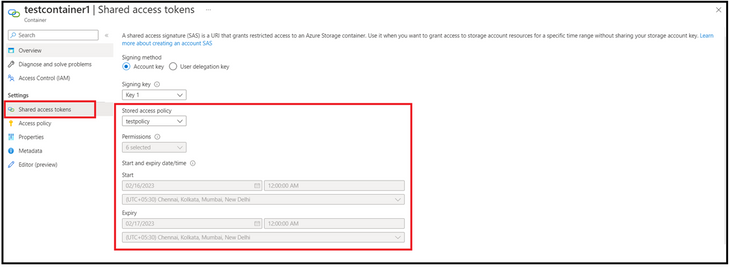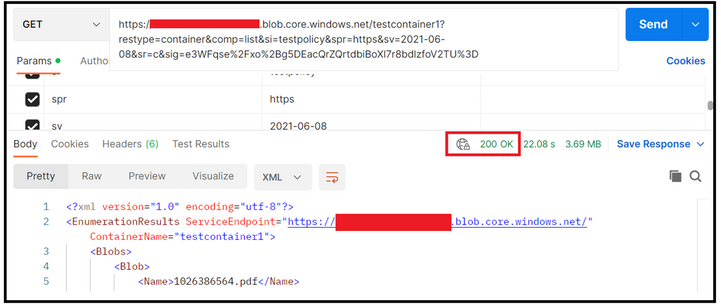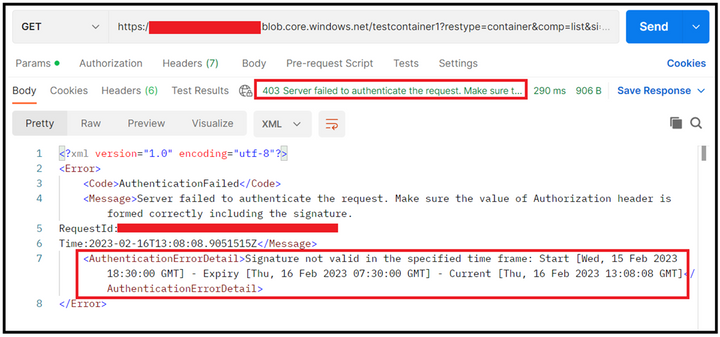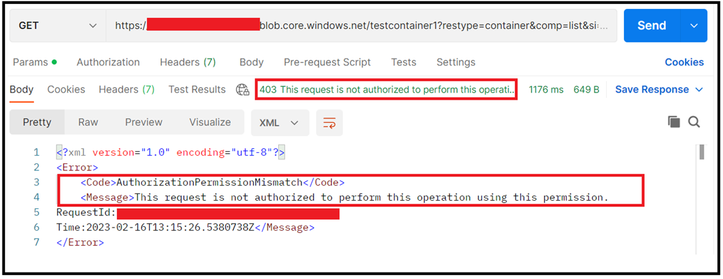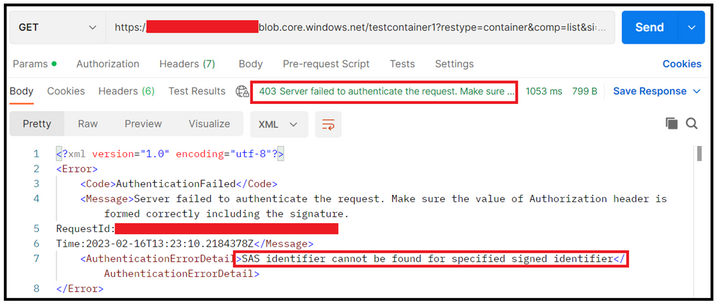This post has been republished via RSS; it originally appeared at: New blog articles in Microsoft Community Hub.
The blog talks about controlling SAS in terms of permissions and expiry time via Stored Access Policy.
When working with SAS, in case a SAS gets compromised, to prevent any un-authorized access via that SAS, the only option to revoke SAS is to recycle the Access Keys being used to sign the SAS. This in turn will affect all the SAS that have been signed using those set of keys. Also, if you are using those keys anywhere in the application, you will have to update the configuration on all those places.
To prevent this, we can make use of a stored access policy. The advantage of using the storage access policy is that you can control expiry time and permissions. Furthermore, if SAS gets compromised, you can edit the permissions of the SAS, make it expired or even delete the access policy completely. This will also prevent you from re-cycling the keys as well.
I am making use of Azure Portal to set up policy, SAS generation however you can make use of REST API or PS cmdlets for the same.
To being with, we have created an access policy with certain expiry time and permission.
Thereafter, we create a SAS token, and we selected the policy created in first step. The fields of permissions and start/expiry times gets disabled are the values associated with the policy are picked automatically.
The SAS that will get generated with look something like below and will have service identifier field.
https://<StorageAccountName>.blob.core.windows.net/testcontainer1?si=testpolicy&spr=https&sv=2021-06-08&sr=c&sig=XXXXXXXX
Now, let's make use of the above generated SAS and see the effects of tweaking SAS parameters on the operations.
In the first sample test, I made use of the above SAS and tried preforming List Blob operation via REST API using POSTMAN. We could see that the call is successful, and we got the appropriate response as well.
In the below sample, we have updated the expiry time of the SAS.
When performing the operation now, the authentication failed with 403 status and the error details clearly pointed the reason for the same. Considering you have generated a SAS with larger expiry time, you can tweak the expiry period to revoke that, and you don’t have to recycle the keys.
In the below sample, we revoked the listing permissions.
In the response, you will notice that the authentication failed however the calls was not authorized due to permission mismatch. In scenario wherein you want to revoke any particular set of permissions, but still want to continue with same SAS, this can be achieved.
The last sample is that we deleted the entire policy and this in tur failed the authentication. The error message pointed that the identified couldn’t be found, hence the failure.
In all these sample, the demonstration was on controlling the SAS without recycling the keys.
You can have a maximum of 5 stored access policies per blob container. When you edit a policy, the changes might take up to 30 seconds to take effect.
Reference Links:
Define a stored access policy - Azure Storage | Microsoft Learn
Set Container ACL (REST API) - Azure Storage | Microsoft Learn
Set-AzStorageContainerStoredAccessPolicy (Az.Storage) | Microsoft Learn
Hope this helps!


